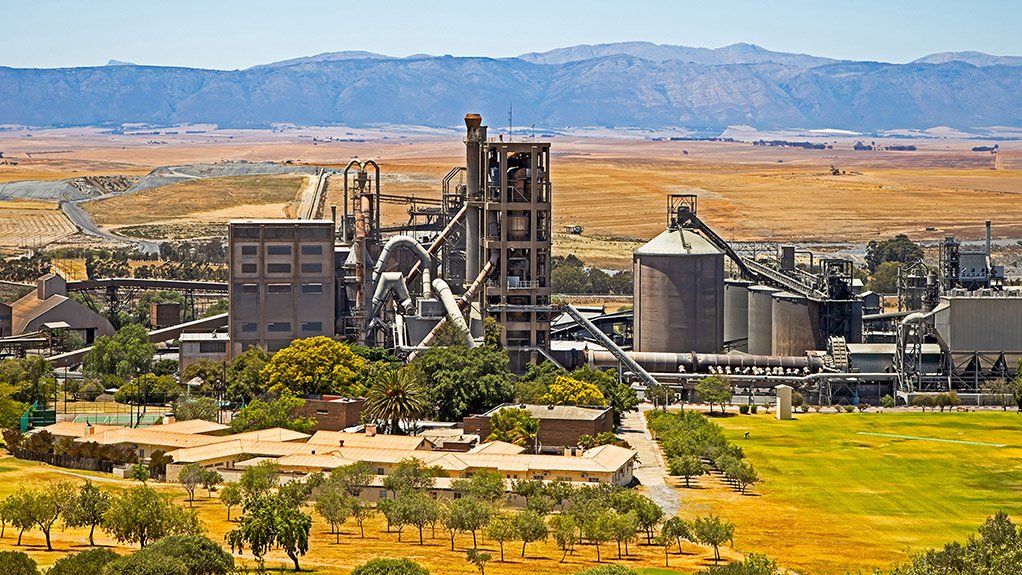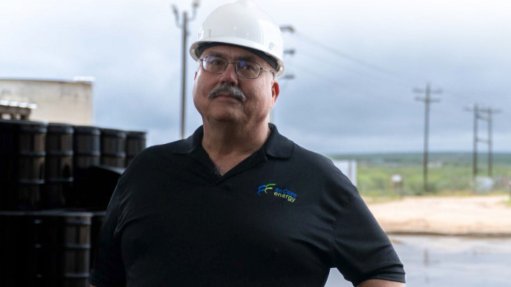Infrastructure projects critical to sector’s growth



PLANTING SEEDS The infrastructure projects coming up should help cement and concrete plants that were initially built during the 2010 construction boom
BRYAN PERRIE The lack of substantial infrastructure projects has dented the sector greatly and we need government’s planned projects to come to fruition
The cement and concrete industry is stagnant and the only avenue for rejuvenation is the implementation of some of the infrastructure projects for which government has allocated over R900-billion, says industry body Cement & Concrete South Africa (CCSA) CEO Bryan Perrie.
“The lack of substantial infrastructure projects has dented the sector greatly and we need government’s planned projects to come to fruition.”
However, there is a glimmer of hope, as State-owned entity South African National Roads Agency Limited (Sanral) has planned, and has started implementation, of a large number of projects particularly on the N3 and N2 in KwaZulu-Natal that will result in concrete roads and structures being constructed, he adds.
The projects are a result of Finance Minister Enoch Godongwana’s announcing in his 2023/24 Budget Speech that spend on transport and logistics will be an estimated R351.1-billion, which includes allocations for Sanral to improve the road infrastructure network.
“These projects will help producers recover marginally, but will unfortunately not be a long-term solution,” Perrie says, adding that the proposed infrastructure projects could develop the sector over the medium term.
Concrete roads offer a longer life cycle, less maintenance and a greener outcome than that of bitumen, which is a commodity which largely has to be imported.
He adds that a study, ‘The Saice Infrastructure Report card with particular reference to Road Pavement Conditions’ – presented by South African Institution of Civil Engineering (Saice) VP Friedrich Slabbert during the fiftieth Road Pavement Forum in May – suggested that to fix the multitude of roads across the country, about R1-trillion would be required.
Perrie notes that local cement companies that manufacture 100% locally produced cement will no doubt benefit from such a budget, as Sanral has administered a strict tender process, which includes procuring only locally manufactured cement made from locally sourced materials.
However, there are importers of cement and producers that use imported materials to make cement products. These bodies are not subjected to carbon tax, the requirements of the Mining Charter and other costs which local producers are subjected to, which is unfair.
Climate Compliance
Perrie says cement manufacturing worldwide is recognised as a significant contributor of carbon dioxide emissions. “CCSA, and its members, have heeded the call to a greener economy and have committed to the drive to net zero,” he stresses.
Last year, CCSA announced its initiative, called Vision: Net Zero Carbon by 2050.
“In response, to comply with CCSA climate change commitments in line with the nationally determined contribution (NDC) and the Paris Agreement, CCSA member companies aspire to net-zero emissions by 2050, with milestones informed by decarbonisation along a 1.5 °C trajectory,” says CCSA industry executive Dr Dhiraj Rama.
“This is in accordance with the United Nations Framework Convention on Climate Change (UNFCCC) requirements,” he says.
“The net-zero target boundary is based on the greenhouse-gas (GHG) inventory target according to the South Africa GHG Technical Reporting Guidelines for the cement sector, in line with the Intergovernmental Panel on Climate Change reporting framework,” says Rama.
He aims to assist in providing adequate support, direction and leadership for CCSA members and will also monitor progress at a sector level.
He says key matters to note include that the net-zero target monitoring covers Scope 1 and Scope 2 emissions.
With supported technology interventions, as well as improved overall nationally developed Scope 3 emission monitoring programmes implemented by stakeholders, the GHG inventory will be expanded accordingly.
The trajectory is based on the understanding that the cement sector is a hard-to-abate sector and will be supported by technical, technological and fiscal support in terms of the CCSA’s commitment to the NDC to the UNFCCC proviso.
Appropriate policy implementation and support to secure green energy, and alternate fuels and resources, will be a second support structure.
CCSA will also support the optimising of current production plants’ operations as practically feasible until the end of their life cycle, as well as ensuring that future plants employ emission-efficient technologies.
He adds that the climate response action will be underpinned by the just energy transition.
Additionally, he insists that the overall consolidated CCSA sector GHG emission profile performance will be transparent, as the organisation will report performance on a regular basis, while the CCSA will ensure sectoral support to members to help them comply with regulatory requirements.
These requirements include complying to draft methodological guidelines for the quantification of GHG emissions, and the Technical Guidelines for the Validation and Verification of GHG Emissions.
Rama concludes that all the technical guidelines have been made freely available to CCSA members.
Comments
Press Office
Announcements
What's On
Subscribe to improve your user experience...
Option 1 (equivalent of R125 a month):
Receive a weekly copy of Creamer Media's Engineering News & Mining Weekly magazine
(print copy for those in South Africa and e-magazine for those outside of South Africa)
Receive daily email newsletters
Access to full search results
Access archive of magazine back copies
Access to Projects in Progress
Access to ONE Research Report of your choice in PDF format
Option 2 (equivalent of R375 a month):
All benefits from Option 1
PLUS
Access to Creamer Media's Research Channel Africa for ALL Research Reports, in PDF format, on various industrial and mining sectors
including Electricity; Water; Energy Transition; Hydrogen; Roads, Rail and Ports; Coal; Gold; Platinum; Battery Metals; etc.
Already a subscriber?
Forgotten your password?
Receive weekly copy of Creamer Media's Engineering News & Mining Weekly magazine (print copy for those in South Africa and e-magazine for those outside of South Africa)
➕
Recieve daily email newsletters
➕
Access to full search results
➕
Access archive of magazine back copies
➕
Access to Projects in Progress
➕
Access to ONE Research Report of your choice in PDF format
RESEARCH CHANNEL AFRICA
R4500 (equivalent of R375 a month)
SUBSCRIBEAll benefits from Option 1
➕
Access to Creamer Media's Research Channel Africa for ALL Research Reports on various industrial and mining sectors, in PDF format, including on:
Electricity
➕
Water
➕
Energy Transition
➕
Hydrogen
➕
Roads, Rail and Ports
➕
Coal
➕
Gold
➕
Platinum
➕
Battery Metals
➕
etc.
Receive all benefits from Option 1 or Option 2 delivered to numerous people at your company
➕
Multiple User names and Passwords for simultaneous log-ins
➕
Intranet integration access to all in your organisation




















